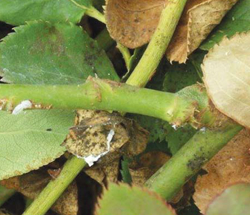Specifically the Benefits are:
Improved Fertiliser Efficiency

When Humates/Humic Acids are combined with any fertiliser DAP, MAP, Urea, SOP, SOA, etc., then that fertiliser will become much more stable in the soil through the binding of the product to carbon. Leaching and lockups are virtually eliminated as the plant nutrients are held in the soil and made available to the plant roots upon demand thus increasing the protein and mineral contents of most crops.
In addition, these fertilisers will be absorbed and utilised much more effectively (30 to 50% improved uptake) in the presence of humates/humic acids. Humates buffer the soils against damage, which can be caused by acid fertiliser applications.
Long-Life Nitrogen
Applied nitrogen is notoriously unstable in the soil. Urea, for example, can deliver about 28% of its 48% nitrogen lode. When combined with Humates/Humic Acids however, ammonium and nitrate nitrogen (from urea) is stored on the humic colloid by the free radicals within the humic and becomes a very stable, slow releasing nitrogen source.
All 46 units are retained and the released pattern is extended up to 60/80 days thus allowing 10-40% less nitrogen to be used. Humates/Humic controls the loss of humus which can be caused through the nitrification of nitrogen (Urea) by nitrifying bacteria.

 As the COVID-19 pandemic ravaged every industry and all walks of life, the international cut flower trade showed remarkable resilience and, at some point, unexpected outcomes.
As the COVID-19 pandemic ravaged every industry and all walks of life, the international cut flower trade showed remarkable resilience and, at some point, unexpected outcomes. Water – The Defining Crisis of the TwentyFirst Century’
Water – The Defining Crisis of the TwentyFirst Century’
 Mealybugs are insects in the family Pseudococcidae and they are found in moist, warm habitat. Many of the common species are in the Pseudococcus and Planococcus genera.
Mealybugs are insects in the family Pseudococcidae and they are found in moist, warm habitat. Many of the common species are in the Pseudococcus and Planococcus genera.


